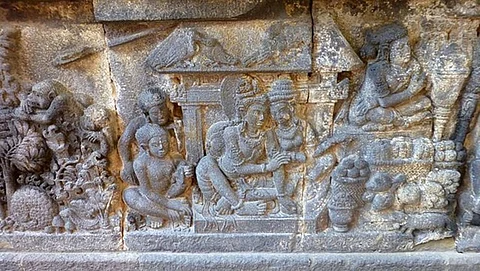
- Home
- Live Blog
- Breaking News
- Top Headlines
- Cities
- NE News
- Sentinel Media
- Sports
- Education
- Jobs

New Delhi: The worldwide spread of the story can be traced back to two important periods i.e. the early centuries of the Common Era and the 19th century.
In the early Common Era, Ramayana found its way to Thailand, Cambodia, Laos, China and Tibet. the northern overland route to Turkestan; the Southern Sea Route from Gujarat to South India to Java, Sumatra, and Malaya; and the eastern overland route from Bengal to Burma, Thailand and Laos.
Indian merchants for spices, gold and aromatic plants carry not only goods but also their religion, culture and philosophy. Brahmin priests, Buddhist monks, scholars and travelers and these traders played a major role in spreading Indian culture to Southeast Asia.Over time, Ramayana became an integral part of culture in these areas. With the advent of civilisation and human settlement the sculptures and writings of Ram were identified by various experts.
Similarly, in Cambodia, the 12th century cathedral of Angkor Wat, originally dedicated to Vishnu. Marching ahead to the 19th century, and the Ramayana reached distant shores like Africa and the Caribbean through the girmitiya migration.
After the abolition of slavery, the demand for plantation labor sent waves of indentured laborers from British India to Fiji, Mauritius, Trinidad and Tobago, Guyana. The epic has become a symbol of hometown, providing comfort and identity to those far from their roots.The Ramayana continues to flourish in these areas now. Ramlila, a folk drama, remains popular, and efforts to preserve and expand cultural centers dedicated to the epic, such as the Ramayana Center Complex in Mauritius, demonstrate its enduring importance.